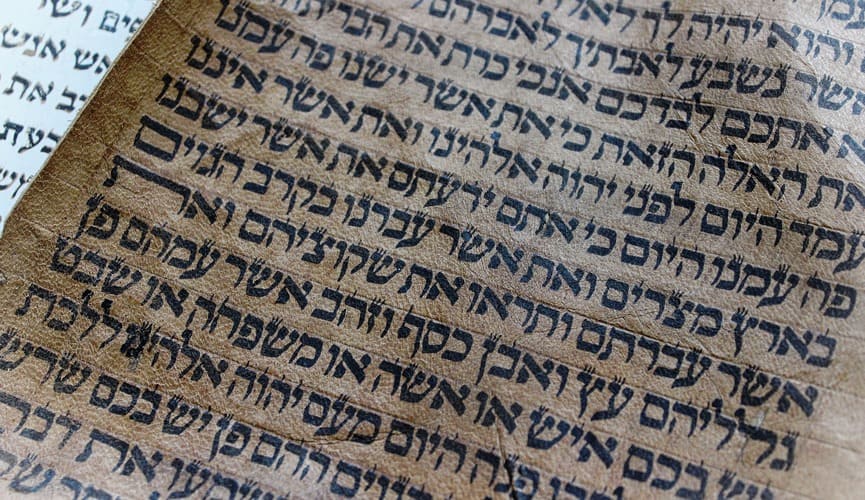In this article we are going to talk about another frequently asked question: What is the difference between Hebrew and Aramaic languages?
As a simple starting point, it should be clear that: These are two different languages. Hebrew is one language, Aramaic is another.
Hebrew is the language of the Hebrews.
Aramaic is the language of the Arameans.
The book of Genesis speaks of a man who was called Shem (or Sem), from whom the Semites are descendant.
Shem had two sons, one named Heber and another named Aram.
From Heber came the Hebrews, and the Hebrew language.
From Aram came the Arameans, and the Aramaic language.
The Hebrew people are well known to all, they are also the people of Israel.
The Arameans, the sons of Aram, were a people who lived in the region of Syria. The country called “Aram” in the Hebrew biblical text, is translated into Western languages as “Syria“.
The language of the Arameans, the Aramaic, ended up taking over the entire Middle East region in the ancient world.
Nowadays the predominant language in the Middle East is Arabic. In the past, it was Aramaic.
With a numerous variety of dialects, Aramaic was spoken by the Babylonians, Syrians, Assyrians, and all the nations in that region. Even the Jews, after the Babylonian exile, ended up adopting a Jewish Babylonian Aramaic dialect, and no longer speaking Hebrew.
Aramaic and Hebrew are distinct but similar languages. They can be compared as distant relatives, just like English and Dutch.
If you are American, British, or from another English speaking country, even if you don’t speak Dutch, you can recognize similarities in the language, because they are both dialects of low German. They are “sister” languages.
This comparison is also valid for Hebrew and Aramaic. This languages are both descendant from the same root, and they are considered to be sister languages. Perhaps not as similar as other sister languages around the globe, but their similarities cannot be ignored.
Nowadays, Hebrew is the official language of the state of Israel, and is spoken by Israelis.
Aramaic, on the other hand, although it is not the official language of a specific country, contrary to what some may think, it is also not a dead language. It is still spoken as a native language by several villages and traditional communities in the Middle East region. But, there are, in fact, several different dialects of the language, so a group of Aramaic speakers may not always understand a different group of speakers, due to its dialectical differences.
Aramaic is also used as a liturgical language by many Christians in the Middle East, in churches of Syriac tradition, and it also appears in some parts of the Jewish liturgy, such as the famous “Kadish” prayer, which is done entirely in Aramaic. It is also the language of the Talmud, an important Jewish literature.
But after all, in what language was the Bible written? In Hebrew or Aramaic?
The Hebrew Bible, known in Judaism as “Tanach”, and in Christianity as “Old Testament”, was written almost entirely in Hebrew, as the name itself says.
But a few minor parts are an exception. Only a small number of chapters of the book of Daniel and the book of Ezra were written in Aramaic.
An important note is that the Aramaic used today is usually written with the Syriac alphabet, which looks very different from the Hebrew alphabet.

But the Aramaic used in Jewish literature, including the Hebrew Bible, is written with the Hebrew alphabet. This means that anyone who knows how to read the Hebrew letters is also able to read the biblical texts in Aramaic of the books of Daniel and Ezra. And whoever understands Hebrew, may also understand a considerable number of these texts in Aramaic.
Knowing Hebrew, it is not so difficult to learn the meaning of the Aramaic texts from the book of Daniel and Ezra. After all, there are just a few chapters to study.





















